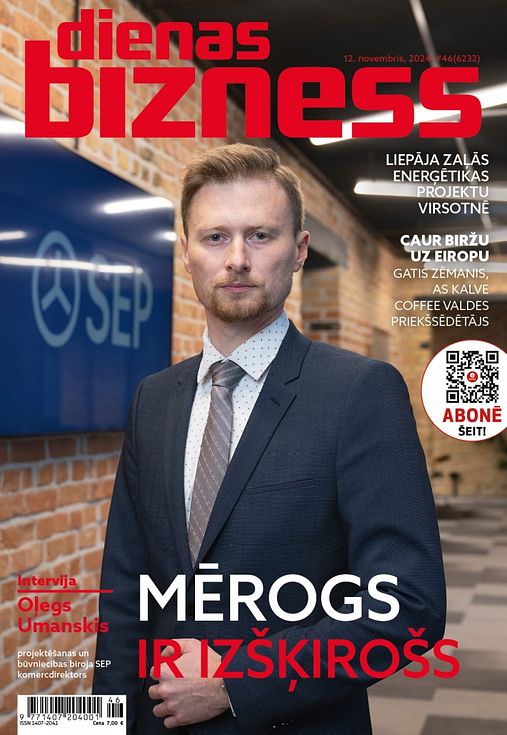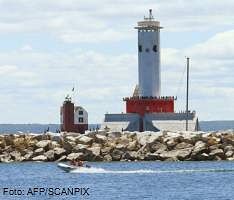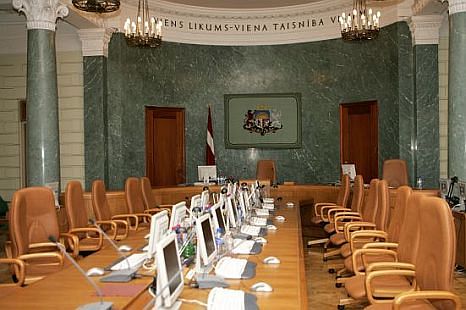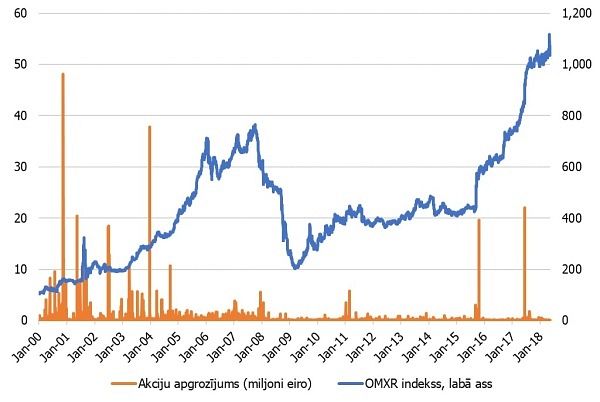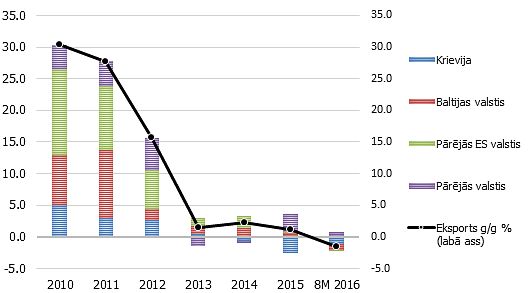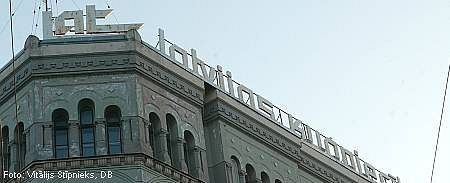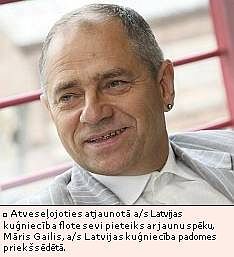Akciju sabiedrības Latvijas kuģniecība (LK) padome ir izvērtējusi un atbalstījusi uzņēmuma stratēģiju līdz 2015. gadam, kurā noteiktais stratēģiskais darbības mērķis turpmākajiem gadiem ir LK vērtības pieauguma nodrošināšana, palielinot koncerna pašu kapitālu un saglabājot tā vietu pasaulē vidējā izmēra tankkuģu īpašnieku desmitniekā vienlaicīgi ar līdera pozīcijām Ziemeļeiropas tirgū. A/s Latvijas kuģniecība stratēģijas izstrādē tika iesaistīti uzņēmuma vadošie speciālisti un kuģošanas biznesā starptautiski atzīti brokeri un konsultanti.
A/s Latvijas kuģniecība augstāk minētā stratēģiskā mērķa sasniegšanai ir izvirzījusi tādus uzdevumus kā tankkuģu flotes kravnesības saglabāšanu un paplašināšanu, risku diversificēšanas nolūkā saglabājot vai labvēlīgas tirgus situācijas gadījumā arī izvēršot gāzvedējkuģu, refrižeratorkuģu un sauskravu kuģu jūras pārvadājumu segmentus. Maksimālu rezultātu sasniegšanai būtiska uzmanība pievērsta arī administratīvo izmaksu efektivitātes paaugstināšanai un materiālo un nemateriālo resursu mobilizēšanai.
A/s Latvijas kuģniecības padomes priekšsēdētājs Uldis Pumpurs norāda uz uzņēmuma pozitīvām ilgtermiņa attīstības perspektīvām, kā nozīmīgākos resursus minot LK kompetento personālu, uzņēmuma atpazīstamību un uzticamību no klientu puses, ilgstošo pieredzi jūras pārvadājumu jomā, kā arī stabilo vietu pasaulē vidējā izmēra tankkuģu īpašnieku desmitniekā. Tajā pašā laikā LK padomes priekšsēdētājs atgādina, ka, fraktētājiem aizvien pārliecinošāk izvēloties jaunus, modernus un drošus kuģus, pieprasījums pēc vecākās flotes daļas samazinās, līdz ar to "attīstīt un nostiprināt LK tirgus daļu mēs varam realizējot flotes atjaunošanas programmu, proti, iegūstot jaunāku, ekonomiski efektīvāku floti. Nav mazsvarīgi, ka, samazinot uzņēmuma flotes vidējo vecumu, tiek apliecināta arī LK pieaugošā korporatīvā sociālā atbildība par okeānu un piekrastes vides aizsardzību," uzsver Uldis Pumpurs.
Turpinot LK tankkuģu atjaunošanas programmas realizāciju, kuras ietvaros Horvātijas kuģu būvētavā 3.Maj ir pasūtīti desmit jauni tankkuģi, bet Korejas kuģu būvētavā Hyundai Mipo Dockyard Ltd. - četri tankkuģi, laika posmā no 2007. gada līdz 2008. gadam, a/s Latvijas kuģniecība flote būs papildināta ar piecām vidēja (MR) un četrām vidēji maza (handysize) izmēra kuģu jaunbūvēm. Tādējādi LK kļūs ne vien par nozīmīgu jūras pārvadājumu tirgus dalībnieku minētajos segmentos, bet iegūs arī plašāku flotes ģeogrāfisko pārklājumu, kas līdz ar uzņēmuma ievērojamo pieredzi uzskatāma par būtisku priekšrocību.
Saskaņā ar LK izvirzīto stratēģisko mērķi uzņēmuma darbību izvēršot un koncentrējot tieši vidēja izmēra tankkuģu pārvadājumos, īstenojama attiecīgā segmenta kopējās kravnesības palielināšana. Kā iespējamos risinājumus tankkuģu jaunbūvju finansējumam jāizvērtē arī citu, konkrētajam segmentam neatbilstošu kuģu pārdošanu, iegūtos līdzekļus ieguldot jaunu un modernu kuģu iegādei.
Saskaņā ar starptautisko jūras konvenciju MARPOL 73/78, kura nosaka prasības kuģu radītā piesārņojuma novēršanai, līdz 2010. gadam (ar kuģa karoga valsts piekrišanu līdz 2015. gadam) pilnībā ir jāpārtrauc vienkorpusa tankkuģu izmantošana naftas produktu pārvadāšanai. Pēc šī termiņa beigām vienkorpusa kuģi ir jāpārbūvē par dubultkorpusa kuģiem, vai jānodod sagriešanai metāllūžņos. Turklāt viens no lielākajiem naftas produktu kravu nodrošinātājiem BP (British Petroleum) ir nācis klajā ar paziņojumu par pakāpenisku savos pārvadājumos izmantojamo kuģu vecuma ierobežošanu. Ievērojot šīs prasības, 2007. - 2010. gada laika periodā no LK tankkuģu flotes tiks izslēgti vismaz divi Tālava, divi Samburga, pieci Dzintari un divi Ventspils tipa kuģi - vecākie no tiem ir būvēti jau 1976. gadā, un šo tankkuģu vidējais vecums jau tagad ir pārsniedzis 22 gadu robežu.
Lai gan LK koncernam piederošā tankkuģu flote dod vislielāko apgrozījumu un īpatsvaru uzņēmuma peļņā, koncerna biznesa un ienākumu risku diversifikācijas kontekstā noteiktu vietu ieņem arī gāzvedējkuģu un refrižeratorkuģu flote. Salīdzinoši nelielajā gāzvedējkuģu pārvadājumu segmentā jebkura liela kuģu jaunbūvju pasūtījuma veikšana nozīmīgi ietekmētu līdzsvara situāciju kopējās tonnāžas piedāvājuma - pieprasījuma tirgū, tādēļ, saņemot izdevīgu piedāvājumu, kā alternatīva varētu tikt izskatīta lietotu gāzvedējkuģu iegādes iespēja.
Kaut arī pēdējā laikā tradicionālo refrižeratorkuģu pārvadājumu tirgū vērojamas pozitīvas izmaiņas, tomēr LK refrižeratorkuģu flotes ekonomiskās lietderības koeficients ir būtiski zemāks par citu tās segmentu - tankkuģu un gāzvedējkuģu flotes rādītājiem. Tādēļ jāizvērtē refrižeratoru flotes neekonomiskāko kuģu, kas neatbilst LK pārvadājamo kravu specifikācijai, pārdošana, vienlaicīgi sekojot līdzi tendencēm pasaules tirgū, lai labvēlīgas situācijas gadījumā saglabātu vai paplašinātu attiecīgo LK tirgus nišu.
Stratēģijas izstrādes gaitā tika analizētas arī LK šobrīd nepārstāvētās - konteineru, ro-ro tipa prāmju un balkeru (beramkravu) - jomas, un pētītas LK iespējas kādā no tām iesaistīties. Izvērtējot katra noteiktā segmenta specifikācijas un LK līdzšinējo darbības pieredzi, par prioritāru tiek uzskatīta LK darbība esošo pārvadājumu tirgos, tomēr neizslēdzot iespēju nākotnē atgriezties pie augstāk minētā jautājuma izskatīšanas.
Svarīga nozīme LK stratēģisko mērķu sasniegšanā ir arī administratīvo izmaksu efektivitātes paaugstināšanai, tādēļ jāapsver LK koncerna administrācijas apvienošanas un vienkopus izvietošanas iespējas. Savukārt koncerna darbības optimizēšanas nolūkos jāīsteno to LK meitas uzņēmumu pārdošana vai reorganizācija, kuri neveic ar LK pamatdarbību saistītas saimnieciskās aktivitātes.
Uzziņai:
Šobrīd LK flotes sastāvā ietilpst 40 kuģu, to skaitā 32 tankkuģi, 5 refrižeratorkuģi, 2 gāzvedējkuģi un 1 sauskravu kuģis, kā arī trīs laika nomā paņemti citiem īpašniekiem piederoši tankkuģi.
Sīkākai informācijai:
Marita Ozoliņa-Tumanovska
LK Sabiedrisko attiecību dienesta vadītāja
Tālr. +371 67020120, 29287169
E-pasts : marita. [email protected]
Riga, 24 August 2007
Press Release
Joint Stock Company Latvijas kuģniecība Strategic Plan to the Year 2015
JSC Latvijas kuģniecība (Latvian Shipping Company - LASCO) hereby informs that the Company's Supervisory Council has considered and supported JSC Latvijas kuģniecība Strategic Plan to the Year 2015. The Company's main strategic goal set in the Plan is to ensure the growth of LASCO's value through increasing the Group's equity and retaining the Group's position among the world's top ten handy-size and middle-range tanker owners at the same time preserving its leading position in the North European market. The work group involved in the development of JSC Latvijas kuģniecība Strategic Plan comprised the Company's leading experts as well as internationally acknowledged shipping brokers and consultants.
To achieve LASCO's main strategic goal, the following objectives have been set: to preserve and expand its tanker fleet tonnage, while retaining or (in case of a favourable market situation) also extending its LPG, reefer and dry cargo segment for the purpose of risk diversification. To reach the maximum results, special attention is paid also to increasing the administrative cost- effectiveness, as well as mobilizing both material and non-material resources.
Mr. Uldis Pumpurs, Chairman of JSC Latvijas kuģniecība Supervisory Council, pointed out the positive perspectives for the Company's long-term development, as its most important resources mentioning LASCO's qualified personnel, the Company's recognition and reliability acknowledged by the customers, rich experience in the field of cargo transportation by sea, as well as its stable position among the world's top ten handy-size and middle-range tanker owners. At the same time Chairman of LASCO Supervisory Council reminded that the charterers increasingly prefer new, modern and safe vessels, which results in a deteriorating demand for older tonnage. "Therefore, we will be able to increase and strengthen the Company's market share through the implementation of LASCO Fleet Renewal Programme, that is, through the acquisition of a younger and economically more efficient fleet. It is not insignificant that by decreasing the average age of its fleet LASCO also evidences its growing corporate social responsibility for the protection of ocean and coastal environment," stressed Mr. Pumpurs.
Within the frames of LASCO Tanker Fleet Renewal Programme, 14 newbuildings have been ordered by the Company: ten at 3.Maj shipyard in Croatia and four at Hyundai Mipo Dockyard Ltd. in Korea. In the course of the programme implementation in the period from 2007 to 2008 JSC Latvijas kuģniecība fleet will be extended with five MR (middle-range) and four handy-size tanker newbuilds. Thus, LASCO will not only become a significant player in the given segments of the shipping market, but also achieve a wider geographical cover that, in combination with the Company's rich experience, is regarded as an essential advantage.
To expand and concentrate LASCO's activity in the middle-range and handy-size segment of the tanker market as envisaged by the Company's main strategic goal, the extension of the Group's total tonnage in the respective segment is required. To ensure finance for tanker newbuildings, the sale of other vessels, inadequate for the given segment, should be considered as one of the potential solutions enabling to invest the released funds into the acquisition of new and modern tonnage.
MARPOL 73/78, an international convention for the prevention of pollution from ships, bans the carriage of oil products in single-hull tankers and requires all single-hull tankers to be phased-out till 2010 (till 2015 provided the flag State Administration permit). Upon the expiry of the above phasing-out period all single-hull tankers shall be either rebuilt to double-hull vessels or scrapped. Besides, BP (British Petroleum), one of the major oil companies, has announced the gradual introduction of age limits for the vessels involved in its business. To comply with the above-mentioned requirements, in the period from 2007 to 2010 LASCO will phase-out at least two Talava class, two Samburga class, five Dzintari class and two Ventspils class ships, the oldest of which were built as early as 1976, and whose average age already now exceeds 22 years.
Despite the fact that LASCO tanker fleet ensures the largest part of the Company's sales and makes the largest contribution to the Company's profit, from the point of view of diversification of the Group's business and income risk certain role is played by its LPG and reefer fleet. In a comparatively small LPG carrier segment placing of a large newbuilding order would considerably impact the overall tonnage demand-supply balance in the market. Therefore, in case of an advantageous offer, as an alternative to ordering newbuildings the acquisition of second-hand LPG carriers can be considered.
Although positive changes have been observed recently in the traditional reefer market, the cost-to-performance ratio of LASCO's reefer fleet is considerably lower than that of its other segments, namely tanker fleet and LPG fleet. Therefore, the sale of the least economically efficient reefers incompliant with LASCO cargo specification should be considered, at the same time following the trends in the international reefer market in order to preserve or expand the respective LASCO's niche in case of a favourable market situation.
Also sectors currently not represented by the Company (such as container ships, Ro-Ro type vessels and bulk carriers) as well as LASCO's potential participation therein have been analyzed in the process of the Company's Strategic Plan development. Having considered the specifications of each particular segment as well as LASCO's previous experience, the priority was set on LASCO's activity in the markets currently represented by the Company, however not precluding a possibility to raise the issue again in the future.
Administration costs optimisation also plays an important role in the achievement of LASCO strategic goal. Therefore, both structural and geographical consolidation of LASCO Group's administration should be considered. Besides, to optimise LASCO's performance, subsidiaries whose activities are not related to LASCO's core business should be either sold or reorganised.
At present JSC Latvijas kuģniecība fleet comprises 40 vessels, including 32 tankers, 2 LPG carriers, 5 reefer vessels and 1 Ro-Ro/general type vessel, as well as three tankers time chartered in from other ship-owners.
For detailed information:
Marita Ozolina-Tumanovska
Head of PR Department
Phone: +371 67020120,2 9287169
E-mail : [email protected]

